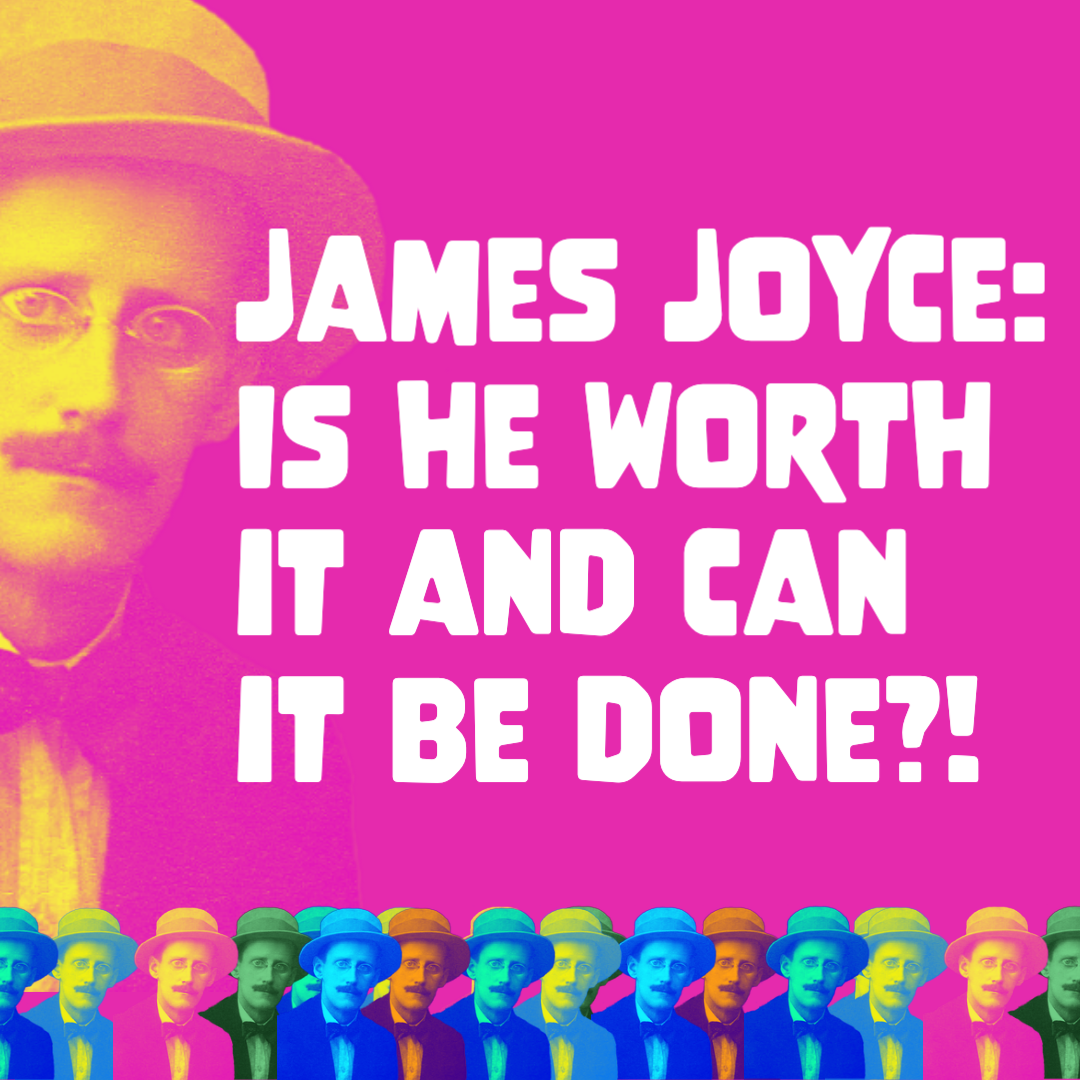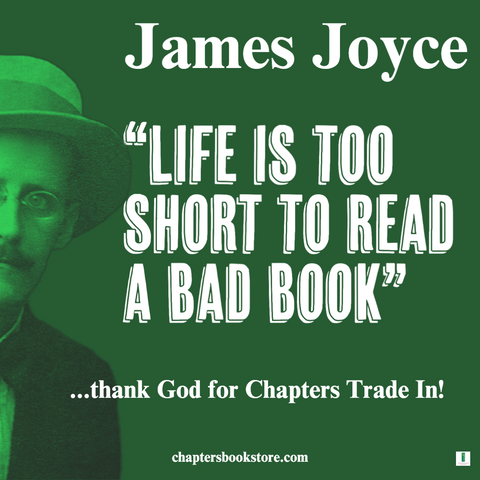
As someone who read James Joyce a long time ago and has re-visited frequently over the years, I often hear people say they find his writing difficult or intimidating. Whilst it's true that his style can be complex and challenging, I’ve got to the stage of believing that anyone can learn to appreciate and enjoy his work (to a degree) with the right tools … even if you never ‘like’ him, you might end up ‘getting’ him!
I’ll start with the debate between The Dubliners and Ulysses, two of Joyce's most famous works, and share some tips for understanding and enjoying them … not sure if I am brave enough to try and read again, let alone write about ‘Finnegans Wake’!.

Before diving into The Dubliners and Ulysses specifically, it's important to understand Joyce's writing style as a whole - he was a modernist who experimented with language, narrative structure, and point of view in ways that were groundbreaking for his time; his works often feature stream-of-consciousness narration, multiple perspectives, and fragmented storytelling.
Modernist writing developed roughly between the late 19th century and the mid-20th century; the exact dates can be argued, but the movement is generally associated with the period spanning from the 1890s to the 1940s and it emerged as a response to the social, cultural, and political changes brought about by the Industrial Revolution and the First World War. It reflected a sense of disillusionment with traditional values, the decline of established social structures, and the anxieties of the modern age. Modernist writers sought to break away from conventional literary forms and experiment with new techniques, styles, and themes.
Notable modernist writers are Joyce, Virginia Woolf, T.S. Eliot, Ezra Pound, Gertrude Stein, Franz Kafka, Marcel Proust, and William Faulkner. This is where Chapters Secondhand comes into its own, we have literary criticism and essays by and about lots of these writers that are now out of print - a wander around Secondhand and a chat with David or Emiliee might introduce you to commentary that you couldn't begin to imagine!
Anyway, these authors employed innovative narrative techniques, stream-of-consciousness writing, fragmented narratives, and nonlinear structures to capture the complexities and uncertainties of the modern world, which then had a significant impact on subsequent literary movements and continues to be studied and appreciated for its radical approach to form, language, and subject matter - so in this respect, Joyce although groundbreaking and innovative, was a part of something bigger.
Joyce also drew heavily on his own life experiences and the history and culture of his native Dublin. His works are full of references to Irish mythology, politics, geography, religion and social issues, as well as personal memories and experiences. This makes his writing rich and complex, but also more challenging to understand for readers who are not familiar with these contexts - it makes his writing multi-layered and faceted, not impossible.
Despite this complexity, there are some works that are more accessible to readers new to his work. The Dubliners, a collection of short stories published in 1914, is a great starting point for Joyce beginners and also a perfectly good point to stop too! These short stories, more traditional in structure, are beautifully crafted; in a way, it is the art of these stories that prove Joyce’s ability as a writer. When his more experimental work could be written off as self-indulgent, meandering, without understanding of form, style, etc., this collection demonstrates clearly that he was a master of order but was looking to go beyond that.
The Dubliners explores various aspects of life in Dublin, from childhood to old age, and features a range of characters from different social classes and backgrounds. While the stories are not necessarily easy or light-hearted, they are more straightforward in terms of narrative structure and language. Readers get a sense of Joyce's writing style and themes without feeling overwhelmed by the complexity of his later works.
The argument is that whilst The Dubliners is a good starting point, Ulysses is considered the ultimate challenge for readers of not only Joyce's work, but of literature of the 20th century in general. Published in 1922, it tells the story of a day in the life of Leopold Bloom, an advertising canvasser in Dublin, and features a wide range of literary techniques and references.
It is long, over 900 pages long and features 18 chapters, each with its own distinct style and structure. The novel also features a wide range of literary allusions and references, from classical mythology to Irish history and literature. In addition, it is written in a highly experimental style, with stream-of-consciousness narration, multiple perspectives, and non-linear storytelling. The novel also features a lot of wordplay, puns, and other linguistic games, which are challenging … on occasion very challenging ….
Tips for reading Ulysses
While Ulysses may seem daunting, there are some tips and strategies that can help readers navigate its complexity and appreciate its richness. Here are a few that worked for me:
- Have a guide or companion book - there are many books and resources available that can help readers understand the historical, cultural, and literary references in Ulysses. Instead of that burn of frustration of “I don’t understand this”, there is “ok, that makes sense” and an appreciation of some of its complexity and significance.
- Take it slow - Ulysses is not a book to be rushed through, it is Marathon, not a sprint (see ancient Greek reference because I am edumacated!). Take your time with each chapter and don't be afraid to reread sections or consult outside resources if you're feeling confused.
- Embrace the experimentation - While Joyce's writing style may be challenging, it's also full of creativity and experimentation. Try to approach Ulysses with an open mind and a willingness to explore new literary territory.
- Enjoy the humor - Despite its complexity, Ulysses is also a funny and playful book. Joyce's wordplay and puns can be delightfully silly and irreverent, so don't be afraid to laugh along.
If you just don’t get it, read it out loud - there is a huge performative element to this work, it is aural, you have to be able to ‘hear’ what he meant. Sometimes the meaning can’t be conveyed with words, so he made words up to convey with sound, there is a rhythm and lyricism that comes out when you say it out loud - remember he was a poet and a singer, music was intrinsic to his daily life:
“The sea, the snotgreen sea, the scrotumtightening sea.”
Whether you're reading The Dubliners or Ulysses, understanding Joyce's writing style is key to appreciating his work. Here are a few elements of Joyce's style to keep in mind:
- Stream-of-consciousness narration - Joyce often uses a stream-of-consciousness style of narration, which means that the thoughts and feelings of his characters are presented in a continuous, unbroken flow. This can make his writing more challenging to follow, but it also allows for a deeper exploration of character psychology.
- Multiple perspectives - Many of Joyce's works feature multiple narrators or perspectives, which can create a complex and layered view of the world he's depicting. Don’t worry if you get confused - it really isn’t just you.
- Literary allusions and references - Joyce was clever and well-read and it was important that everybody he came across knew that.
While both The Dubliners and Ulysses are important works in Joyce's oeuvre, there is often debate among readers about which is the "better" or more important book. Some argue that The Dubliners is more accessible and emotionally resonant, while others point to the groundbreaking experimentation and complexity of Ulysses. Ultimately, it comes down to personal preference and reading experience. Both books offer unique experiences and interaction with writing styles, ideas and themes, and both can be rewarding reading experiences for those willing to put in the effort.
Despite the challenges of his style and content, I do believe that reading his work can be rewarding and enjoyable; they are full of humor, emotion, and humanity, and offer a unique perspective on the world and human experience and there is a huge sense of satisfaction in completing the 900 pages of his magnum opus - see, even I am getting into it here!
And HERE is the best reason I see for why it is worth battling through Ulysses … In modernist literature, the role of the reader in constructing meaning was a topic of considerable interest and exploration. Several theorists and writers contributed to discussions on this subject, and it is still hotly discussed today:
- Roland Barthes, a French literary theorist, emphasized the active role of the reader in interpreting a text. He proposed the concept of the "readerly" and the "writerly" text. A readerly text is one that is passive, where the meaning is fixed and determined by the author. In contrast, a writerly text is one that encourages reader participation, interpretation, and engagement, allowing readers to become co-creators of meaning.
- A German literary scholar, Wolfgang Iser developed the concept of "implied reader." According to Iser, every text implies a particular reader who is expected to fill in the gaps and complete the meaning. The reader's interaction with the text involves a constant negotiation between the gaps and the information provided by the text, resulting in the creation of meaning.
- Louise Rosenblatt, an American literary critic, introduced the concept of "transactional reader response." She argued that meaning arises from the transaction or interaction between the reader and the text. The reader's personal experiences, values, and interpretations shape their understanding of the text. She emphasized the importance of the reader's subjective response in constructing meaning.
- Umberto Eco, an Italian semiotician and novelist (The Name of The Rose, Foucault’s Pendulum), discussed the concept of the "open work." According to Eco, an open work is one that allows for multiple interpretations and invites reader participation. The reader's active engagement with the text leads to the creation of meaning, and different readers may construct different interpretations based on their individual perspectives.
Modernist literature often employed experimental techniques, fragmentation, and ambiguity, leaving gaps and uncertainties that required reader involvement to make sense of the text; these theorists, among others, highlighted the active role of the reader in the process of meaning-making - the reader's subjectivity, experiences, and cultural context play a crucial role in shaping the interpretations and overall meaning of the work - therefore, whatever you make of Ulysses and understand of it and from it is equal and valid … Joyce is only a genius because your reading of him makes him so!



![Manchan, Magan IRISH INTEREST Magan Manchan: Listen to the Land Speak [2022] hardback](http://chaptersbookstore.com/cdn/shop/files/manchan-magan-magan-manchan-listen-to-the-land-speak-2022-hardback-57197364117843_{width}x.jpg?v=1743077146)
![Keegan, Claire IRISH FICTION Claire Keegan: Small Things Like These: Shortlisted for the Booker Prize 2022 [2022] paperback](http://chaptersbookstore.com/cdn/shop/files/keegan-claire-claire-keegan-small-things-like-these-shortlisted-for-the-booker-prize-2022-2022-paperback-59373419102547_{width}x.jpg?v=1758902529)

